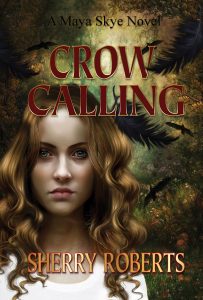 “What’s wrong with freedom, man? That’s what it’s all about.”—Easy Rider
“What’s wrong with freedom, man? That’s what it’s all about.”—Easy Rider
You can call us self-published. You can call us indie authors. You can call us rebels. We are people who have decided to approach our writing not through the lens of the gatekeepers—traditional publishers who controlled the publishing industry—but through our own lens.
I think I had indie blood in me long before I began writing. I was the teenager who watched Easy Rider in the theater of my small town and went out and bought the first suede leather fringe jacket I could find. I loved that jacket, and I loved the way it made me feel. It was the essence of freedom.
The growth of independent publishing in the last twenty years has spelled freedom for writers of all ages, all races and socio-economic levels, and in all genres.
But freedom comes with a price. We have to pay for our own editors, book designers, and publicists. We don’t get big advances that will allow us to comfortably keep writing the next book, while the current one earns money for the publisher. Until Amazon released the Kindle in 2007 and print on demand became technologically viable, we couldn’t distribute our books easily without incurring hefty printing bills and turning a spare bedroom into a warehouse for our books. Sorry, kids.
We continue to fight the stigma of self-publishing. Many publications won’t review our books, and many bookstores won’t carry our books. Or, if a bookstore will carry our book, we don’t have the funds to procure special, attention-getting placement on the shelf. You won’t find us on bestsellers lists because those lists are based on reports from booksellers.
Which leads to the biggest price we pay: discoverability. The eternal problem for the indie author is how to connect with readers and let them know a great story awaits them.
That is why I truly appreciate the work of MN Writes MN Reads, which is dedicated to forging a bridge between indie authors and readers, encouraging writers to pursue their creative works, and enhancing the ebook collections of Minnesota libraries. (There are similar programs in other states. This is a growing movement.)
Hundreds of readers have accessed my books via MN Writes MN Reads. Readers are reading my books through libraries all over Minnesota as well as other states: Louisiana, Ohio, Texas, South Dakota, Indiana, Illinois, South Carolina. Through MN Writes MN Reads, I even have new readers abroad in Canada, Russia, and Costa Rica.
I discovered MN Writes MN Reads through Library Journal’s SELF-e program, a curated program seeking to connect indie books, libraries, and readers. Curated—yes. Because indie books are so often slammed by the publishing industry, it was important to me to be curated, and I was impressed that Library Journal was reaching out to indies. So when Library Journal chose my books to be SELF-e Select titles, I wanted to shout it from the rooftops.
I still have to work hard to get readers to notice my work; I don’t have a marketing department with big bucks promoting my books. But I do have the support of organizations like MN Writes MN Reads and programs like Library Journal SELF-e, and I am grateful for them. They are keeping the gate open for both writers and readers. You don’t even have to have a library card to access the local authors in the Indie Minnesota collection. Just go to www.mnwritesmnreads.org/read. With a click, you can read an indie book on your computer, download an app to read it on your e-reader, or buy a print copy to support your local authors (always an admirable thing to do).
That is freedom, my friend, and that’s what it’s all about.
Note: SELF-e is now the Indie Author Project, and SELF- Select is now Indie Author Project Select.


Thanks for your insight and sharing your experience. Valuable info. What you say rings true for many of us. I queried agents and publishers and got several offers for digital first publishing, but that came with a hefty cut to do what I could do with no guarantees for print (which strangely outpace my ebook sales–go figure), plus the support for mid-list or new writers just isn’t there. Plus, there is the freedom of choosing your cover (designed professionally, of course). Best to you. Happy writing & selling!
Thanks for your comment. Good luck to you in writing more books and selling them.